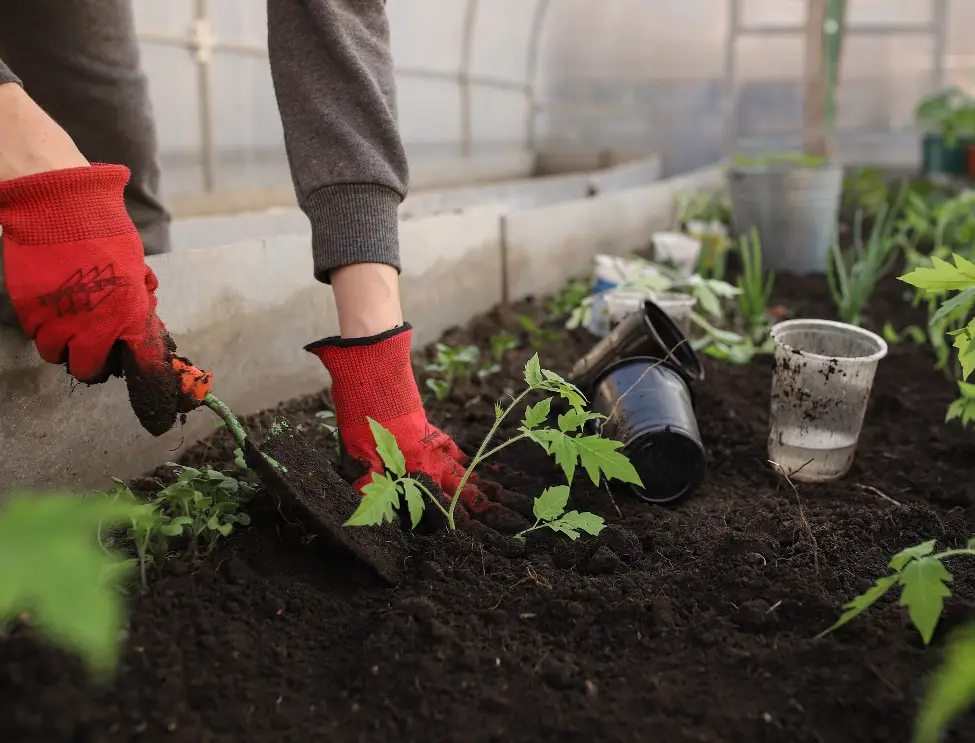When starting a vegetable garden for the first time, there are a couple of things to consider, and planning is key to success.
In this post, we are going to go through some of the most important things you should take into account when starting your home vegetable garden:
- Pick a location for your vegetable garden
- Determine what to plant
- Design and plan your vegetable garden
- Prepare the soil
- Plant your vegetables and companion plants
- Feed and care for your garden
Pick a location for your vegetable garden
Consider how much sunlight your plants are able to get during the day, as this will determine what you can plant. Picking a location that gets about 6 hours of daily sunlight will mean you can plant almost anything. However, there are many plants that can still grow in partial sunlight or even partial shade. It is also ok to plan some afternoon shade if the place where you live is very hot in summer.
Measure the area, this will help you decide how many plants you can place in there. Consider leaving between 60 to 90 cm between plants to give them room to mature properly
Determine what to plant
What to plant will come down to the amount of space, sunlight, and season it is. Remember the best vegetables to grow are the ones you enjoy eating!
Including companion plants in your garden has a number of benefits, they will attract pollinators and beneficial insects, and also act as a natural deterrent for pests.
When selecting your plants, have a chat with a horticulturist at your local garden center. They’ll be able to give you advice on what is best for your area at that time of the year. If you’re planting late in the season, stick to seedlings or advanced plants, as seeds are cheaper but take longer.
Check out this post for some ideas and suggestions.
Design and plan your vegetable garden
Depending on the size of your garden, you will have to put some effort into how you design it.
Consider placing together plants with similar requirements, such as those that prefer regular liquid feeding or with higher water demands.
Keep taller plants at the rear or side of your garden bed, in a spot where they will not overshadow smaller growing varieties.
Prepare the soil
When preparing the soil for your vegetable garden, turn the soil with a shovel to break up large chunks of dirt. Rake your garden area and remove grass, weeds, roots, rocks, and other debris. Also, mix in some garden soil.
Love your soil, and nourish it with organic matter, including garden compost and well-rotted manure. Add organic matter whenever you can and at least once a year. This can be simply laid on the soil surface. Over time, your soil’s structure will improve, becoming better draining and a healthier environment for roots.
Plant your vegetables and companion plants
Loosen roots and soil gently to promote growth.
Read the plant labels and ensure you give them the space they require. If needed, plant stakes 15 to 25 cm from the plant base to avoid damaging roots.
Position all the varieties in a way that gives you easy access to them when the harvesting time arrives.
A good tip when growing veggies, is to rotate your crops by not planting the same vegetable in the same place every year. This will discourage pests and diseases that could appear for a certain vegetable in particular.
Feed and care for your garden
Once your vegetable garden is thriving, you should keep it well-fed using fertilizers. Or, to save money and the environment, you could consider using your own compost instead.
Keep an eye out for pests, especially caterpillars.
Water your garden bed regularly, if the soil is dry 3-3 cm down, it needs watering. During hot dry periods, you will need to increase irrigation frequency.
Keep your plants well mulched with quality fast to break down material. Only apply it after the seedlings have developed into small plants, and keep it back a little from the stems.
In conclusion, growing your own food at home has numerous benefits. Just follow the above tips and you should be able to start easily.
